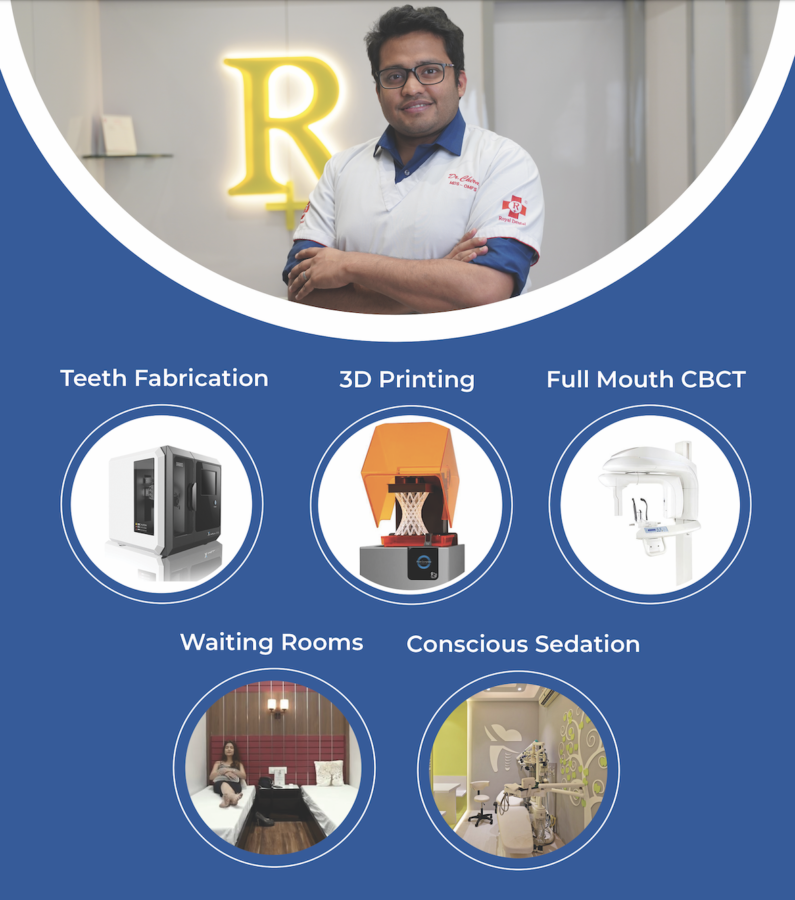You’ve arrived at the Royal Dental Clinic. Hi, I’m Dr. Chirag Chamria, and I’d like to take you on a wonderful trip through time to see how dental treatment was conducted in ancient times. It is incredible to consider the methods and equipment utilised by ancient cultures to treat dental issues without the benefit of modern science and medicine. Let’s go back in time to explore the fascinating realm of ancient dentistry practices.
Dental Treatment in Ancient Civilizations
In ancient times, various civilizations developed their own methods for dental care. Let’s explore a few of these civilizations and the techniques they used to maintain oral health:
Ancient Egypt: Egyptians prioritized dental hygiene and were skilled dentists. They produced toothpaste from plants and honey and used twig or palm leaf toothbrushes. Dental procedures included tooth removals, gold or resin fillings, and implants.
Ancient Greece and Rome: Ancient Greek and Roman dentistry focused on prevention. They stressed brushing with water and broken bones or shells. Greek doctors used vinegar to soften decayed teeth before drilling them out.
Mayan Civilization: The Mayans were advanced dentists. They filled voids with jade and resin. Tooth-shaped stones replaced lost teeth.

Ancient China: Traditional Chinese medicine included dental practices. Ancient Chinese dentists used acupuncture and herbal remedies to alleviate toothaches and gum diseases. They also used precious metals like gold and silver for fillings, and some evidence suggests that they may have performed rudimentary root canal treatments.
Mayan Civilization: The Mayans had a developed understanding of dental hygiene and used various methods to maintain oral health. They used chew sticks made from the twigs of certain trees to clean their teeth. Additionally, they practiced dental modifications, such as filing teeth into different shapes and embedding gemstones into teeth.
Ancient India: Ayurveda, the traditional medical system of ancient India, included dental care as a branch of its teachings. Ancient Indian texts known as the Ayurvedic Samhitas mention dental diseases and their treatments. The texts describe methods like using herbal powders, oil pulling, and mouth rinses for oral hygiene.
Dental Tools and Techniques | Dental Treatment
Ancient dentists relied on a range of unique tools and techniques to perform dental procedures. Although these methods may seem primitive compared to modern dentistry, they were innovative for their time. Here are a few notable tools and techniques used:
Dental Drills: Early dental drills were crafted from materials like flint, copper, or bone. These primitive drills were rotated manually to remove decayed portions of the tooth. The procedure was likely painful and required a great deal of skill on the part of the dentist.
Tooth Extraction: Tooth extraction was a common procedure in ancient dentistry. Dentists used various tools, including pliers, to remove damaged or decayed teeth. In some cases, they even used a string tied around the tooth and pulled forcefully to extract it.
Fillings: Ancient civilizations employed a variety of materials for dental fillings. These materials included gold, silver, tin, and even beeswax. Dentists would clean out the decayed portion of the tooth and fill the cavity with the chosen material to prevent further damage.
Herbal and Natural Remedies | Dental Treatment
Before the advent of modern medicine, herbal remedies and natural treatments played a significant role in ancient dental care. Here are some examples of popular herbal remedies used in different civilizations:
Ancient China: Traditional Chinese medicine relied on herbs like ginseng, clove, and ginger for dental pain relief. These herbs were known for their analgesic properties and were often used in the form of poultices or mouth rinses.
Native American Remedies: Native American tribes had their own unique dental practices. For example, the Iroquois used a mixture of tobacco and ashes to alleviate toothaches, while the Cherokee used an herbal paste made from plants like black cohosh and bloodroot for toothache relief.
Role of Dentistry in Ancient Society | Dental Treatment
Ancient dentistry was important for a lot more than just keeping teeth healthy. People used to think that having nice teeth was a sign of beauty and social standing. Teeth that were in good shape were a sign of good health and wealth, while lost or decaying teeth were often a sign of bad cleanliness or poverty. So, dental care was a very important part of keeping or improving one’s social standing.
Lack of Anesthesia and Pain | Dental Treatment
One of the significant challenges of ancient dental treatment was the absence of modern pain management techniques. Patients had to endure pain during procedures such as tooth extraction or drilling. Some civilizations attempted to alleviate pain using natural remedies, but the experience was undoubtedly discomforting for the patient.
Ancient Dental Practices and Modern Dentistry
Ancient dental practices have greatly influenced and paved the way for the development of modern dentistry. While the techniques and tools used in ancient times may seem primitive by today’s standards, they provided valuable insights and laid the foundation for the advancements we enjoy in dental care today.
Let’s explore how ancient dental practices have influenced and shaped modern dentistry.
Knowledge and Understanding of Oral Health: Ancient civilizations understood the significance of dental health and provided solutions. Their tooth decay, gum disease, and tooth loss findings helped us comprehend oral health. This insight fueled current dental research.
Dental Tools and Techniques: Though primitive, ancient dental tools and methods led to modern ones. Early dental treatments included drills, tooth extraction equipment, and filling materials. Modern dental instruments and practices have improved materials, accuracy, and patient comfort from these early prototypes.
Herbal Remedies and Natural Treatments: Ancient herbal cures and natural therapies influenced contemporary dentistry. Ancient treatments are antibacterial, analgesic, and anti-inflammatory. To improve oral health, toothpaste, mouthwashes, and herbal supplements have included some of these natural substances.
Evolution of Anesthesia and Pain Management: Modern dentistry has improved anaesthesia and pain management. Ancient dental procedures were painful. Modern dentistry uses anaesthesia and sedation to minimise pain and anxiety, making dental operations more pleasant.
Conclusion
As we conclude our journey into the world of ancient dental treatments, we can appreciate the ingenuity and resourcefulness of early civilizations. Despite the limited resources and knowledge at their disposal, they developed innovative techniques and tools to address dental problems. Exploring the history of dentistry allows us to value the progress made in modern dental care and be grateful for the advancements that have improved our oral health and overall well-being. At Royal Dental Clinics, we combine the wisdom of ancient dentistry with the latest technology to provide our patients with the best possible care in the present day.
© All rights reserved by Royal Dental Implants Pvt Ltd
Issued in public interest






